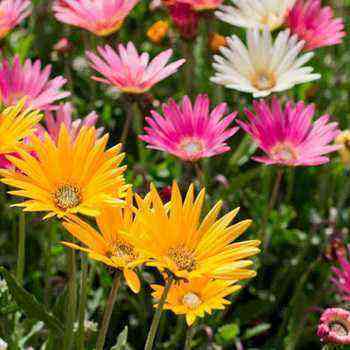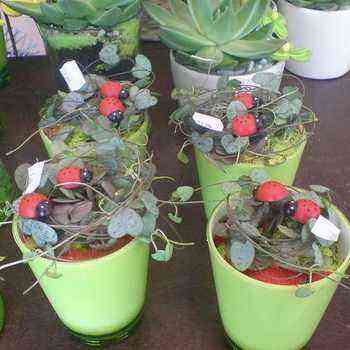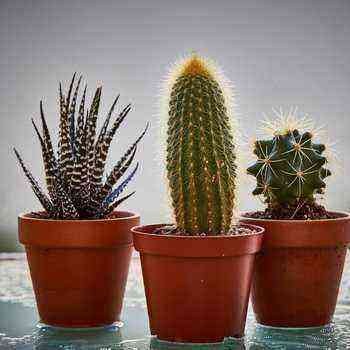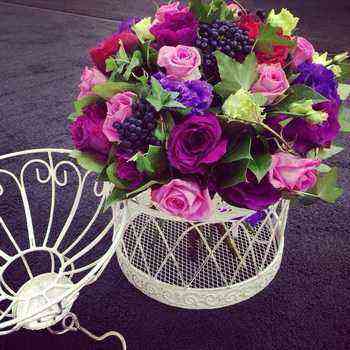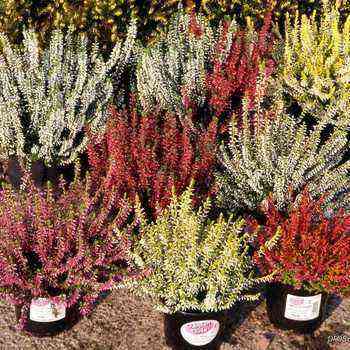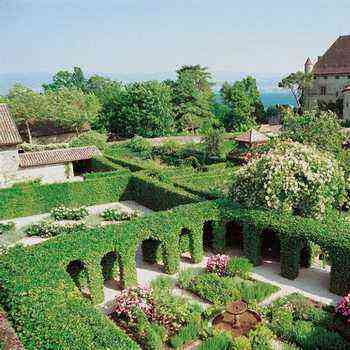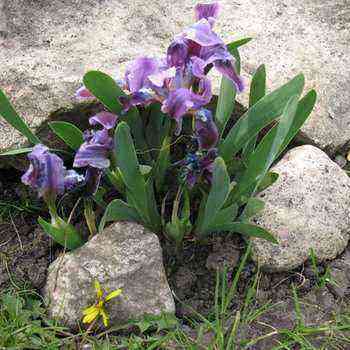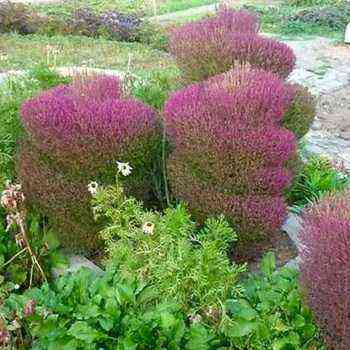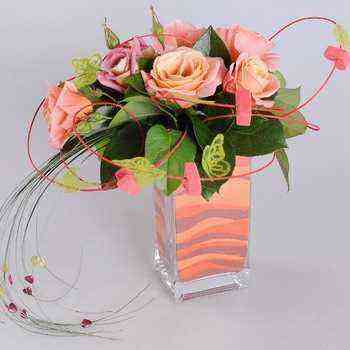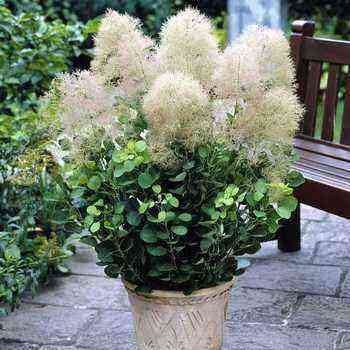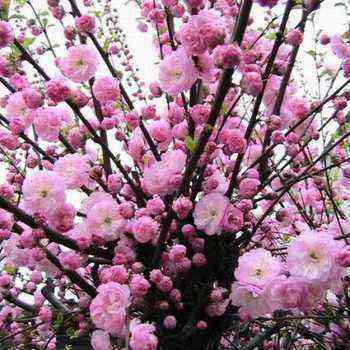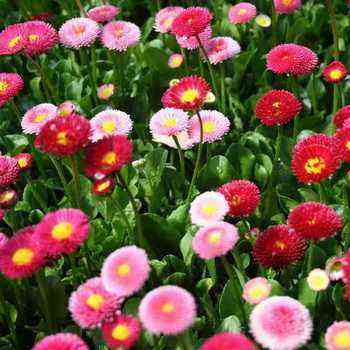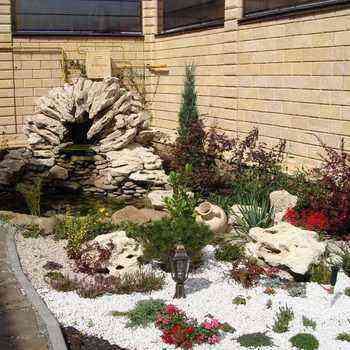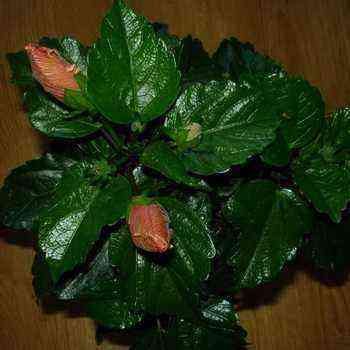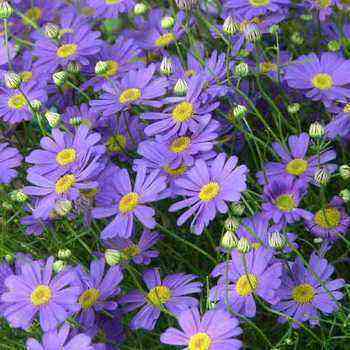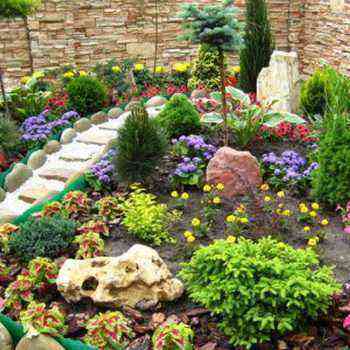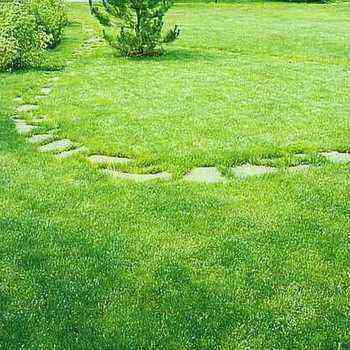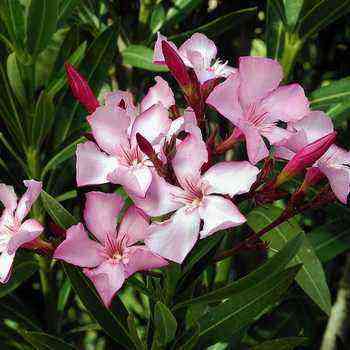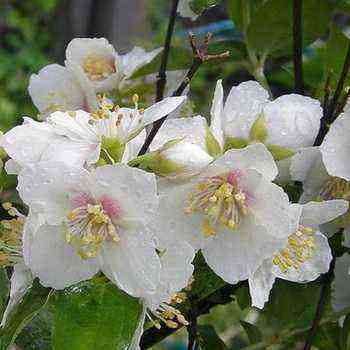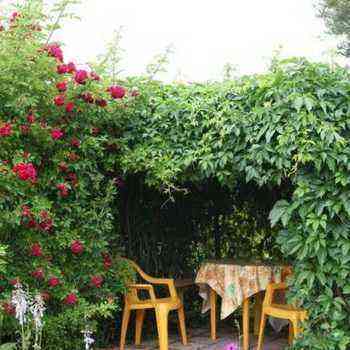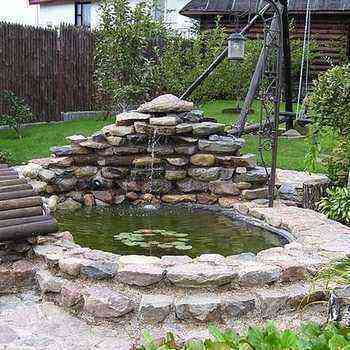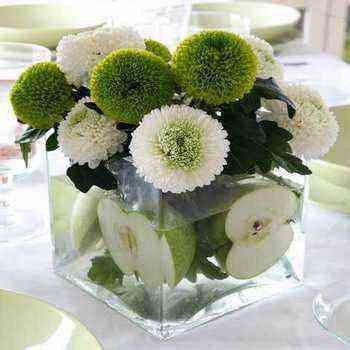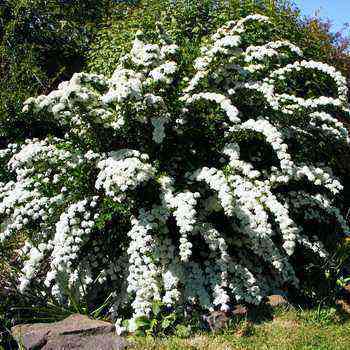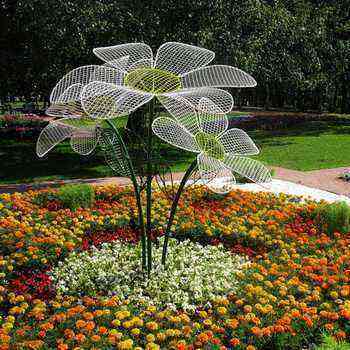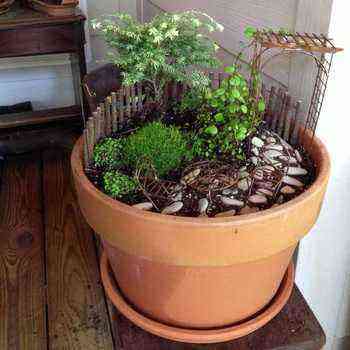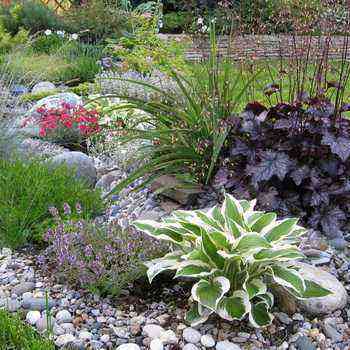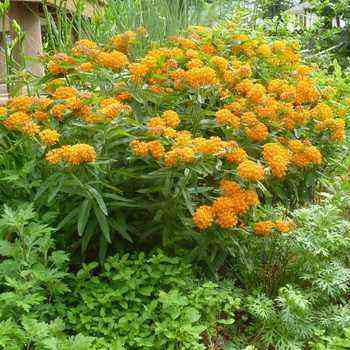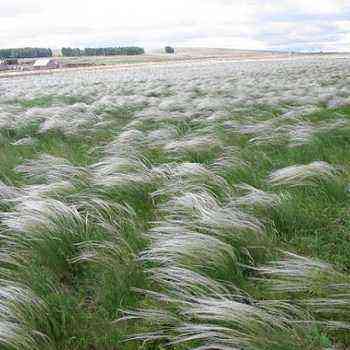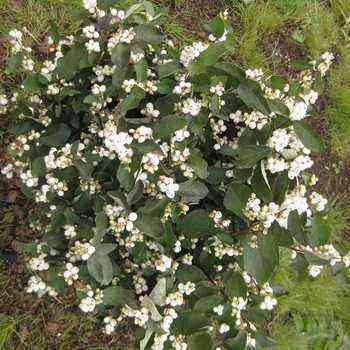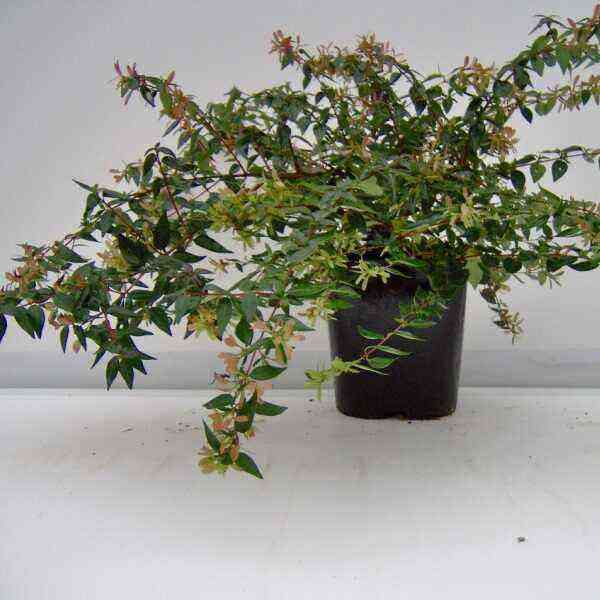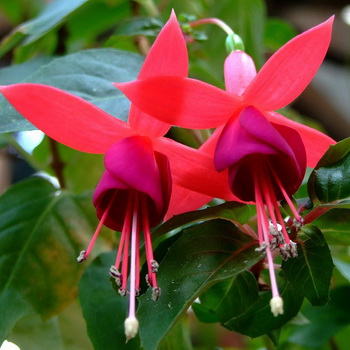 The plant name fuchsia is often used to denote a color located in the generally accepted shade scale between amaranth and “flamingo”. From a botanical point of view, this is completely unjustified: there are so many fuchsia species that the color of their flowers is far from being limited to pink shades. After reading the description of the plants, you will find out that fuchsias are white, and red, and purple, and purple, and lilac, and at least a dozen more shades.
The plant name fuchsia is often used to denote a color located in the generally accepted shade scale between amaranth and “flamingo”. From a botanical point of view, this is completely unjustified: there are so many fuchsia species that the color of their flowers is far from being limited to pink shades. After reading the description of the plants, you will find out that fuchsias are white, and red, and purple, and purple, and lilac, and at least a dozen more shades.
The bright red fuchsia flowers, collected in hanging brushes, do not attract bees, which do not distinguish red color well; they are pollinated by small birds – hummingbirds. This is facilitated by sticky and viscous glue – viscin, secreted by fuchsia pollen. This glue is drawn into long threads, connecting together several grains of dust. Such a thread with dust particles will stick to the long beak of a hummingbird and fly with it to another flower.
Such glue threads can also be noted when describing such flowers, relatives of fuchsia, as fireweed (ivan-tea) and primrose (evening primrose). All of them are of the same family – onagrikovy or primrose (Oenotheraceae).
What fuchsia looks like and how it blooms
Fuchsia (Fuchsia) belongs to the Onagricaceae family. Homeland – South and Central America.
The genus includes about 100 species, among which there are ampelous plants, shrubs and trees. The first fuchsia was found in South America by a traveler in 1696 and is named after Fuchs, a XNUMXth century botanist.
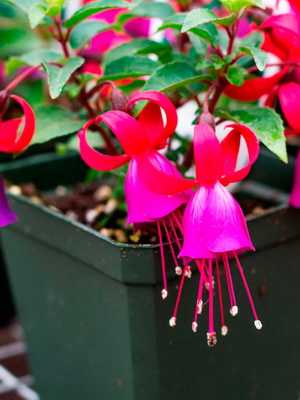
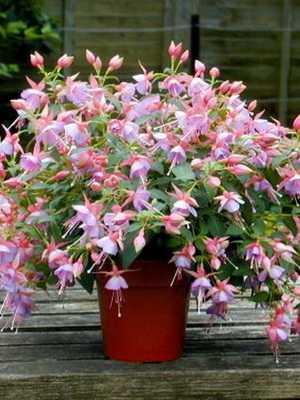
Probably each of you is familiar with how fuchsia blooms: her original flower, lowered from top to bottom, looks like a ballerina doll in a red blouse, white or blue skirt, with thin legs in yellow shoes and with a green head. The fuchsia flower has a tubular calyx of four pointed sepals of red color and four-lobed, and sometimes double, like a rose, a corolla of red, blue or white and eight stamens. Leaves with depressed veins on pink petioles are opposite, located crosswise. Alchemists saw the mysterious signs of the cross and the rose in the fuchsia flower.
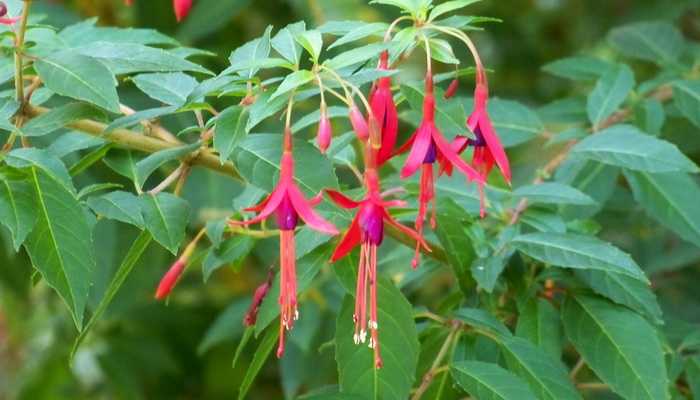
Indoor flower fuchsia is called gracilis (Fuchsia gracilis) – graceful, graceful. Its homeland is Mexico, although related species are found in South America near the Strait of Magellan and even in New Zealand.
See what a fuchsia flower looks like in these photos:
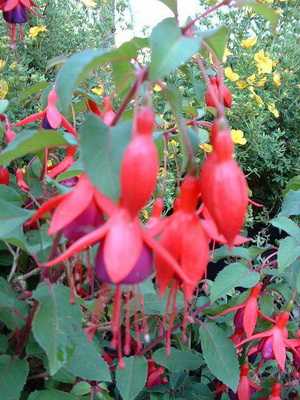
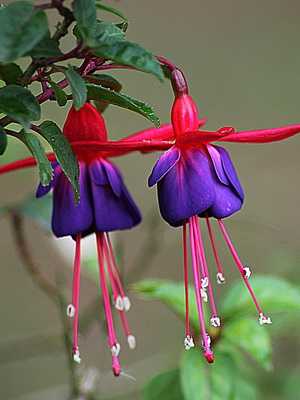
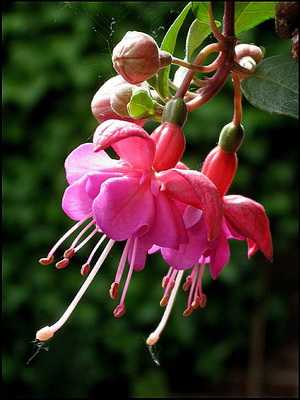

At home and in southern countries, fuchsia grows like a bush or tree. And we can have both on our windows if we trim these plants accordingly.

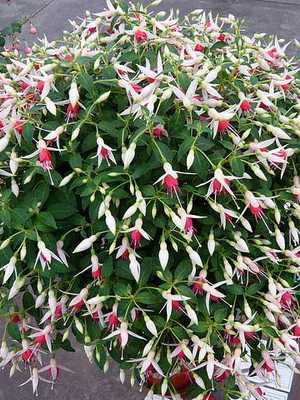
In nature, it is a shrub or semi-shrub. At home, the fuchsia flower grows no more than 70 cm high. The leaves are green or dark green. The flowers are axillary, drooping, on long pedicels, sometimes collected in a raceme. The flowers have a bright range of colors – white, pink, red, purple, there are varieties with a double color. They can be double or semi-double. It blooms profusely and for a long time. Can be grown in bush, weeping or standard form.
At home, hybrid fuchsia is grown. This plant has long, thin shoots and oval green leaves with pointed tips, located opposite.
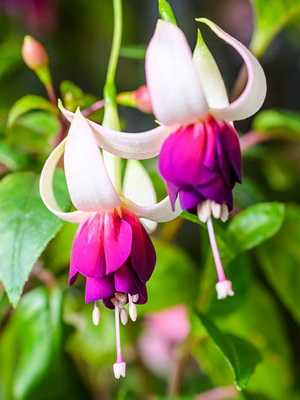
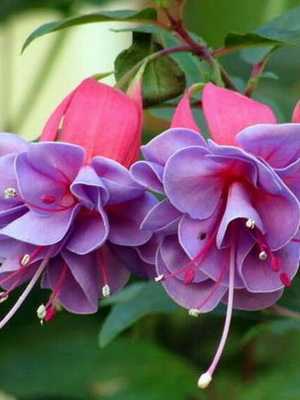
The flowers are simple or double, with cupped and tubular curved petals and long stamens. The color is varied, sometimes the calyx and petals are painted in different colors. Flowering continues throughout the year.
The houseplant fuchsia blooms, depending on the species, from spring to late autumn.
Fuchsia species: photos, names and descriptions of plants
Types are very popular:
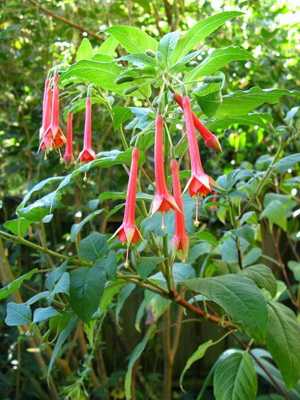
Fuchsia brilliant (F. fulgens)
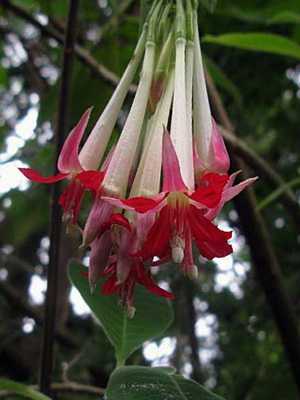
Fuchsia bolivian (F. boliviano)
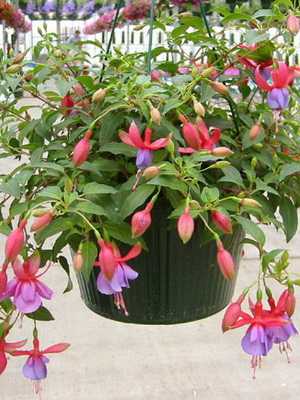
Fuchsia graceful (F. gracilis)
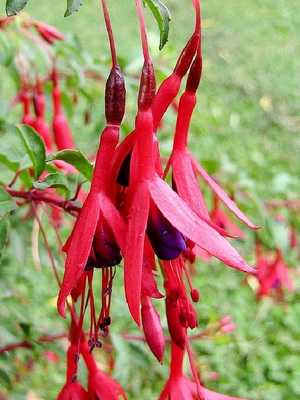
Fuchsia Magellan (F. Magellanica)
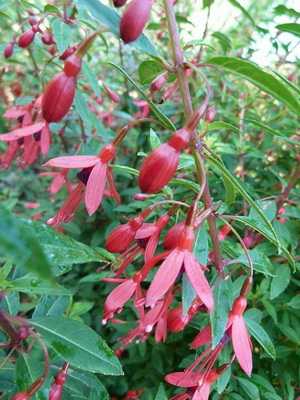
Fuchsia small-leaved (F. microphylla)
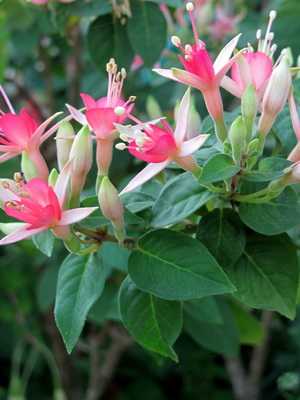
Fuchsia three-leaf (F. triphylla).
It makes no sense to list the names of varieties of these types of fuchsia fuchsia – there are too many of them. Moreover, they differ not only in the shape and shade of flowers, but also in yellow and variegated leaves. However, it is better to choose those for which a temperature of 10-15 ° C is suitable in winter. For example, the variety “Pink Cornel”, which originates from Bolivian fuchsia.
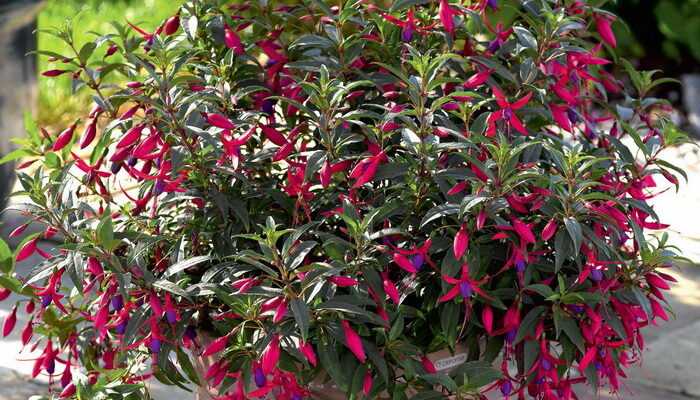
Fuchsia hybrid. These plants with drooping bell-shaped flowers with bright “skirts” are well known as garden and indoor dwellers.
There are simple, semi-double and double forms with a wide range of colors, but pink, red, purple and white colors predominate. Those commonly grown in pots are hybrid, mostly compact plants about 45-60 cm tall. It is better to eliminate old specimens, unless they are valuable mother plants, which should be replanted every spring.
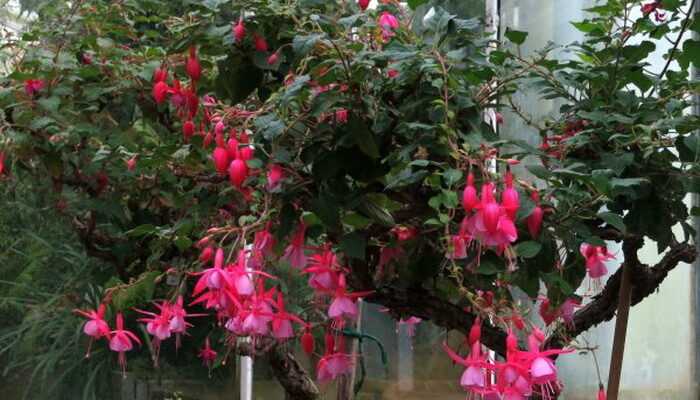
Fuchsia is graceful. In natural conditions – an evergreen shrub up to 1 meter high.
Shoots are reddish, thin. The leaf blades are green, serrated at the edges. In their sinuses, single flowers or flowers collected in racemose inflorescences sit on long pedicels. They are usually drooping, like bright lanterns. The calyx has four sharp, narrow, bent red sepals. The bell-shaped corolla is violet-red, much shorter than the calyx.
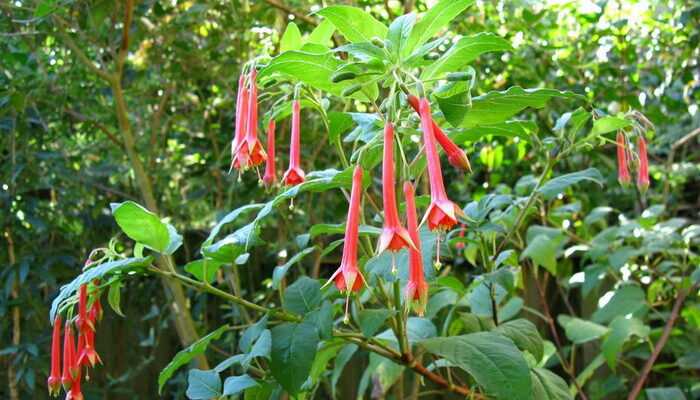
Fuchsia is brilliant. Homeland – Mexico, Chile, Peru. A graceful shrub that blooms from spring to autumn.
Stems are thin, flexible. Leaves are opposite, glabrous, cordate-oval, pointed, with a serrated edge, purple-greenish. Petioles are reddish. The flowers are drooping, emerging from the axils of the upper small leaves in the form of dense bundles of bright crimson-red color. The flowers are long-tubular, the petals are shorter than the lobes of the calyx. Abundant flowering, long lasting both on the balcony and in the room. If, after the first flowers have bloomed, they are pruned and the plant is fed, then flowering will continue continuously until the cold weather. Watering is rare in winter, plentiful in summer. Fuchsia hibernates in cool, bright rooms, while shedding leaves. By spring, it is again covered with leaves and blooms. It blooms badly without winter rest. Easily propagated by herbaceous cuttings. In soil culture, it is grown in a mixture of greenhouse and leafy soil, peat and sand (1: 1: 1: 1/2). It grows and blooms for many years in hydroponic and ion exchange crops. Shiny fuchsia is an indispensable plant for balconies, windows, verandas and flower beds, as well as for rooms with artificial lighting.
Look at the photos of the fuchsia species, the names of which are listed above:
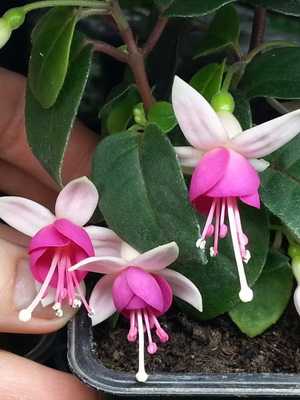
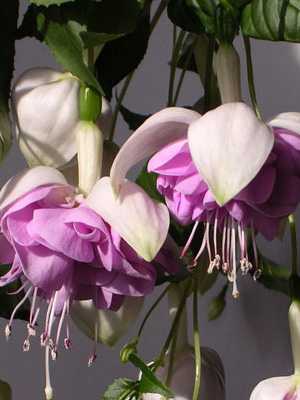
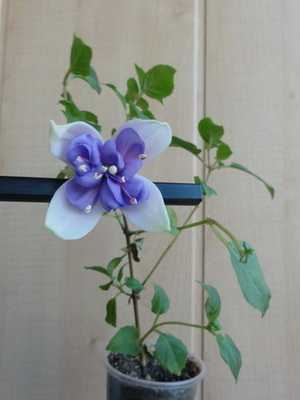
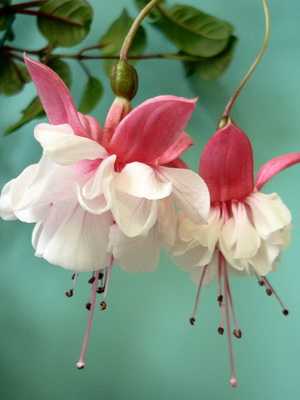
Growing fuchsia at home: how to care for a flower in a pot (with video)
Fuchsia is photophilous, but cannot withstand the midday sun. Fuchsia does not like the bright sun, so you can install it by the window overlooking the east side. When growing and caring for fuchsia at home in winter, the plant needs more light.

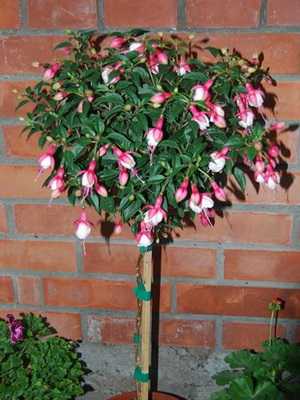
In winter, depending on the species, the flower should be placed in a room with a temperature of 5-10 ° C or 10-15 ° C. In the summer, you can take the fuchsia out into the garden, in a place protected from wind and direct sunlight.
An important condition for growing fuchsia is the correct substrate: it should consist of leaf and sod land, humus, peat and sand (1: 1: 1: 1: 1).
Blooming fuchsia is not recommended to be often rearranged from place to place, since the plant can shed flowers and buds.
During the growing season, they are fed with flower fertilizers. During the period of active growth, it is recommended to apply mineral fertilizers to the soil twice a month.
Fuchsia must be replanted annually in March – April. To stimulate flowering and give the desired shape, the shoots should be cut. In winter, the shoots are shortened by 1/3 and the remaining buds and flowers are removed. In the spring, pruning of dry and cutting of diseased shoots is carried out.
There are fuchsias in need of storage. Plants are pruned and removed from the pots at the onset of severe frost. Then they are covered with peat and stored in the refrigerator.
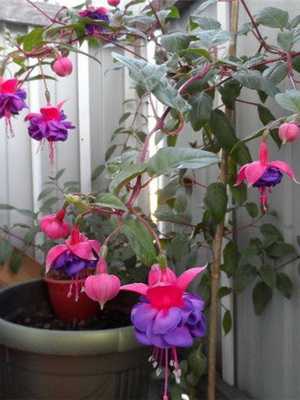
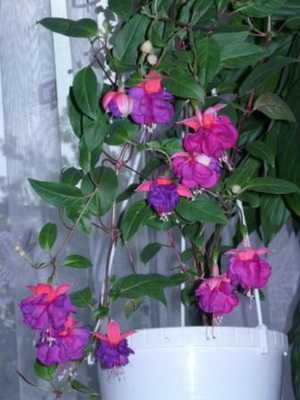
Taking care of fuchsia in a pot, as practice shows, is not difficult. In spring and summer, the flower grows well in a sunny window when sprinkled and abundantly watered. In summer, fuchsia should be put in a box outside the window onto the balcony or garden and watered with liquid fertilizer.
With this care, fuchsias bloom profusely from spring to autumn, and when pruning buds – and in late autumn, and grow into a whole tree, which needs to be transplanted into a tub.
It is very convenient to carry out artificial pollination on fuchsia according to all the rules of breeding.
Use tweezers to open the bud of the fuchsia flower that has not yet opened and carefully pull out all eight stamens. Do not damage or forget to leave the pestle. Place gauze, cellophane or tissue paper bags on these flowers. This is necessary in order not to bring pollen from the flowers of the same plant. Write down the date.

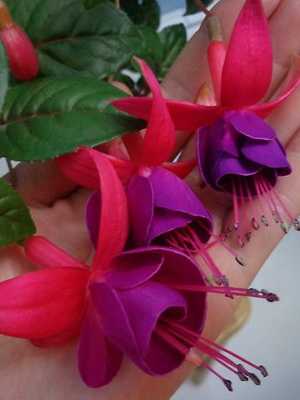
When the flower has bloomed and the stigma of the pistil becomes wet, look for a flower with ripe pollen on another fuchsia. Then make a sharp triangle out of a cork or elastic band and attach it to a stick or piece of wire. With such a stick, take the pollen from the stamen and transfer it to the stigma of the pistil of the flower with the torn stamens. You can just touch the stigma with the plucked stamens. Record the day of pollination, marking the pollinated plant with a sign.
Write down the special characteristics of these plants and their flowers. Now wait for the black berries to ripen.
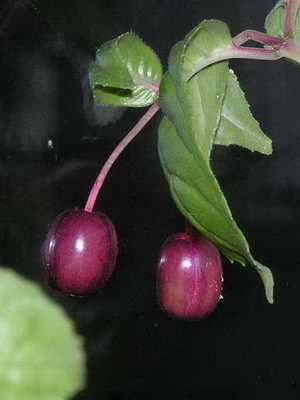
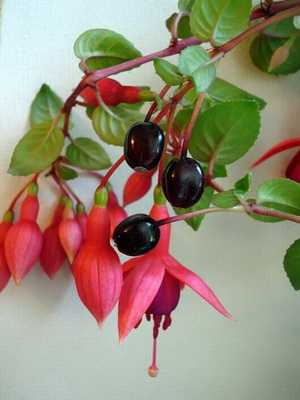
Some fuchsias found in South America have sweet berries and are eaten by the locals. It is interesting to observe how a berry is formed from the green ovary of a dried flower, first a round red, then purple, as if tied crosswise, and, finally, completely dark, almost four-sided in one and a half centimeters. You can try it. The juice of the berry is lilac, watery and sweetish.
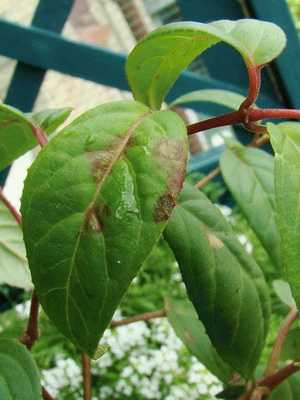

Suffers from thrips and spider mites, does not tolerate cold and dry air. It is not recommended to move or touch the plant often.
If aphids are affected, spray the plant with soapy water, and if a spider mite has visited it, increase the humidity.
Fuchsia care: how to water and shape a houseplant
In summer, abundant watering and spraying is necessary. In the period from spring to autumn, the plant is watered when the top layer of the earth dries up a little, but in winter, watering should be done less often. However, at any time of the year, try to water the plant so that the water in the container does not stagnate, otherwise the fuchsia will throw off the foliage. But with too little watering, the leaves on the plant can wither.
And how to water fuchsia with the onset of cold weather? In October, the plant is transferred to a cool place, and watering is noticeably reduced. In winter, fuchsias are trimmed, for this they remove unnecessary, obsolete branches, and the rest are only shortened to give the plant a neater appearance. In winter, fuchsias are completely dormant, so it should be kept in a cool room, and the number of waterings should be reduced as much as possible (in general, it is recommended to replace watering for a dormant period with sprays). Fertilizers are not required. Without a dormant period, fuchsias, especially varietal ones, can die.
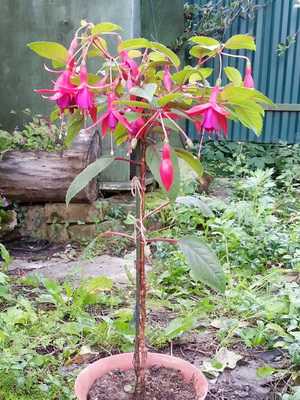

If you know how to form a fuchsia, you can get not only a bush or tree, but, leaving two long stems, you can grow a garland or trellis.
Pull two strings obliquely from the pot to the walls in different directions and tie two fuchsia branches to them.


Fuchsia is usually formed in the form of a bush or standard tree. In this case, starting from a young age, the plant, having chosen the strongest shoot, removes the rest, and on the main shoot, the lower leaves and lateral branches are regularly removed, forcing the stem to stretch and thicken. In ampelous forms, the ends of long shoots are pinched, stimulating branching.
Reproduction of fuchsia at home: how to propagate a flower by cuttings, seeds and grafting
Reproduction of fuchsia at home is done by cuttings and seeds. To obtain seeds, fuchsia must be artificially pollinated.
Before propagating fuchsia by cuttings, planting material should be placed for eight to ten days in wet sand for rooting, and then transplanted into a pre-prepared soil mixture.


Fuchsia propagation by cuttings is done in the spring, then you can simply transplant it by adding soil with a lot of organic matter. If you are simply replanting a plant, then do it every spring, but if you want to propagate the plant, then it is enough to cut the stalk in the winter and plant it in light soil, maintaining the air temperature at about +18 ºС during rooting. To make your plant more attractive, plant several cuttings in one pot at once.
If you cross fuchsias with red and blue corollas or fuchsias with white and red cups, then it is interesting to know what flowers the plants will have from the sown seeds obtained from such a crossing. In order for the berries and seeds to be large, it is recommended to cut off some of the non-pollinated buds.
How else to propagate fuchsia at home? Try sowing seeds in bowls. If you got a lot of seedlings, then from the hybrids raised in various ways, choose and keep the best and most original ones for further education and observation. Mark when your pupils bloom, and take a closer look at what flowers and berries they get. Paint them with watercolors.
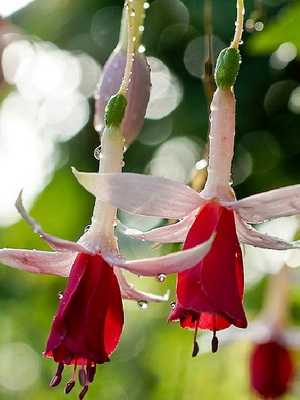
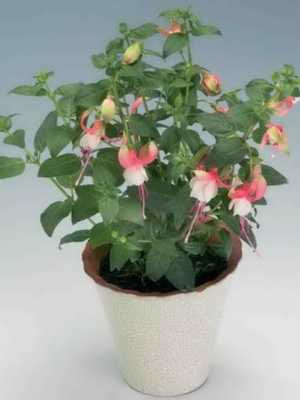
Plant fuchsias, which give flowers or berries of different shapes and colors, on top of each other: fuchsia with white-red flowers on fuchsia with blue-red ones, and vice versa. On one grafted plant, leave the leaves on the rootstock, on the other only on the scion. When the scions bloom, pollinate them with pollen from their own flowers, that is, self-pollinate them.
If you have two fuchsias, then you can grow together by grafting, rapprochement, two of their branches. On the window, you will get a garland of thin branches covered with hanging flowers. Fuchsia with blue flowers can be grafted onto fuchsia with red flowers.
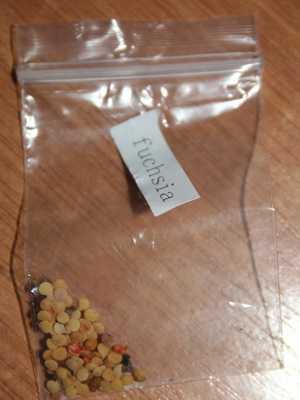
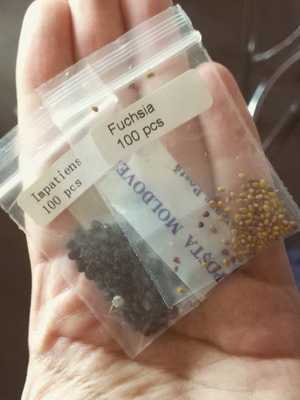
Collect seeds from the resulting berries and sow them. Bring them up in different conditions. When they bloom, look at the flowers and berries of the vegetative hybrids. Like the rootstock or the scion? Since these experiments are lengthy, do not forget to carefully record all the signs of crossed plants by pollination or grafting, and also mark the hybrid seedlings with labels with inscriptions about their origin.
